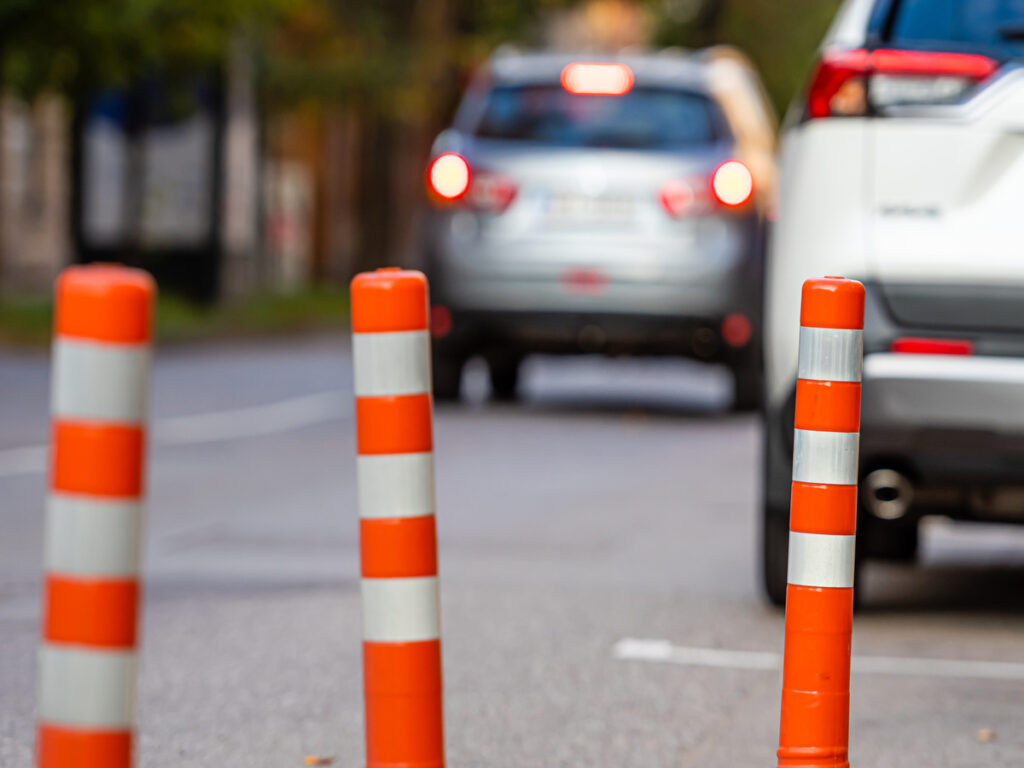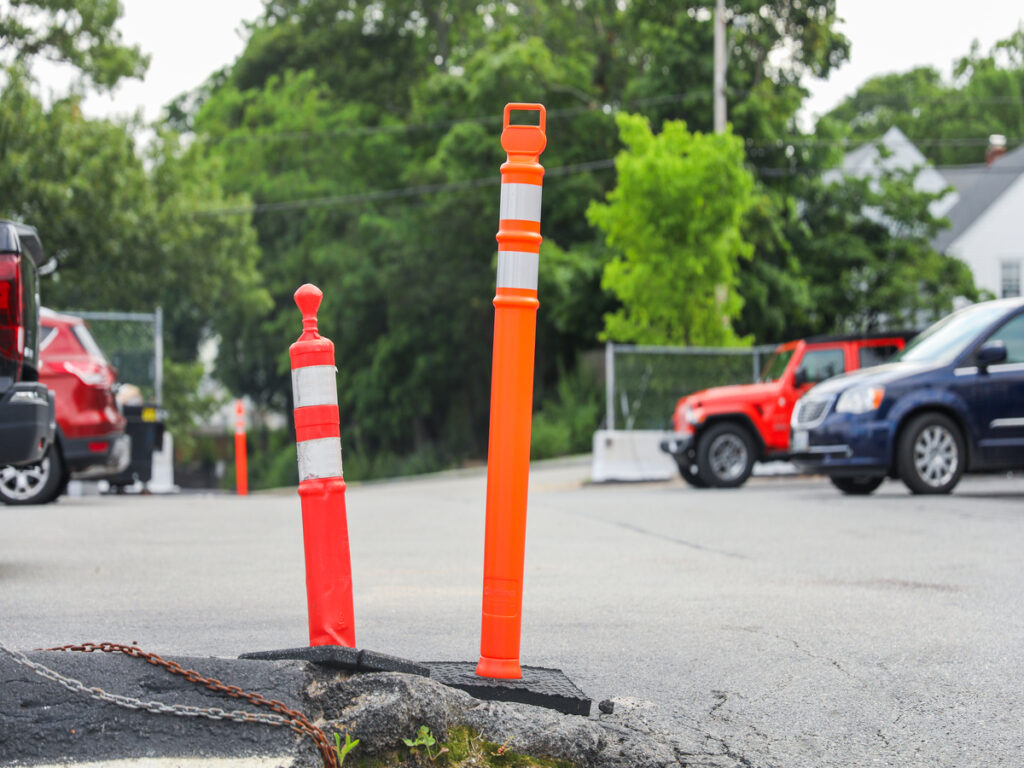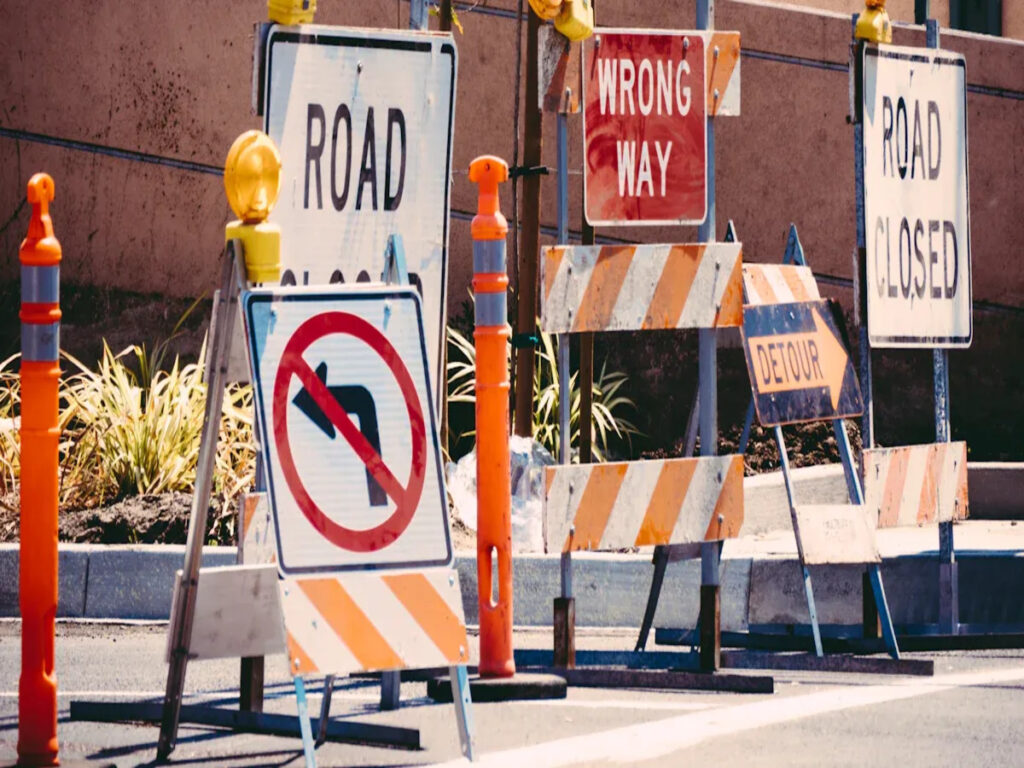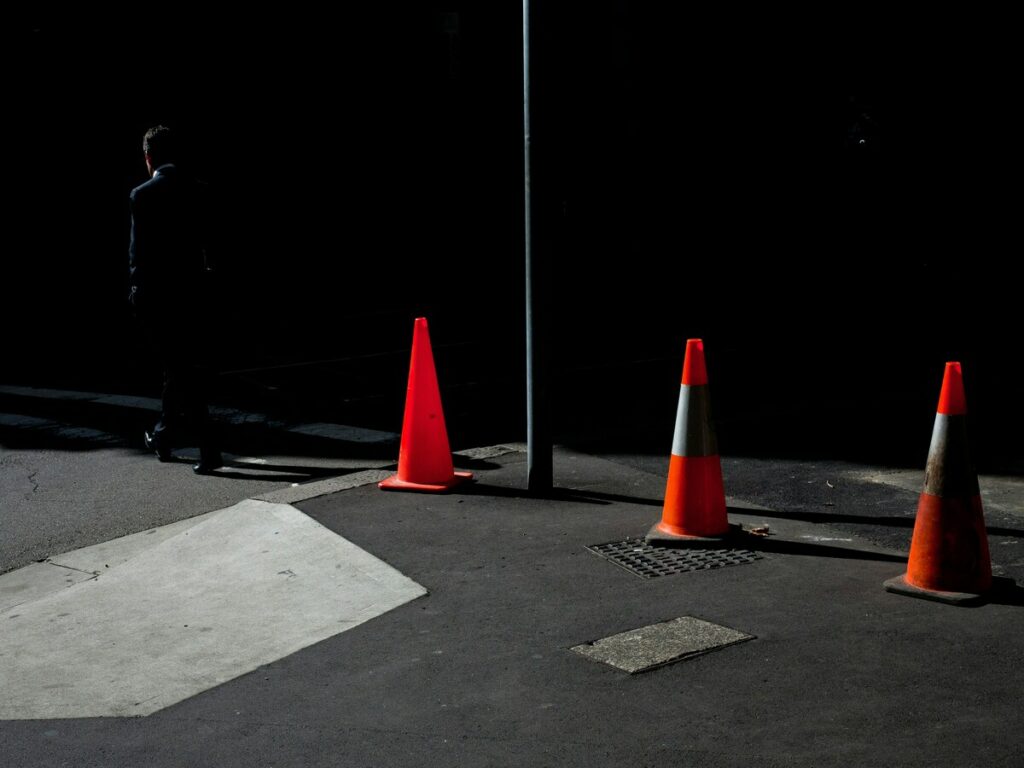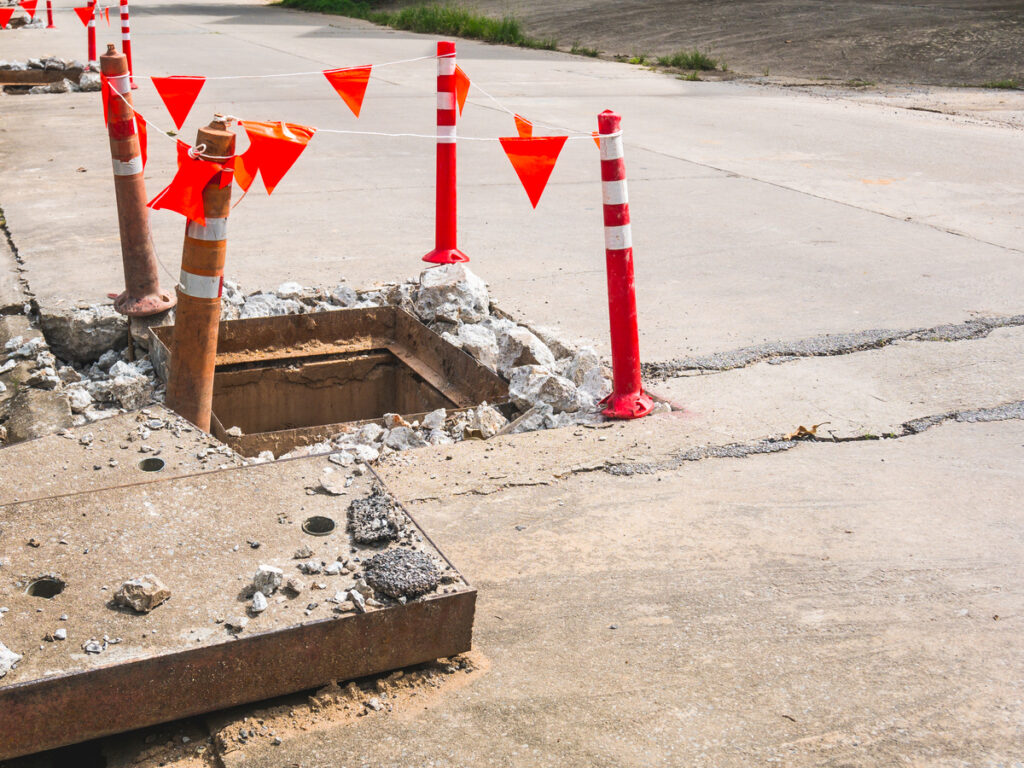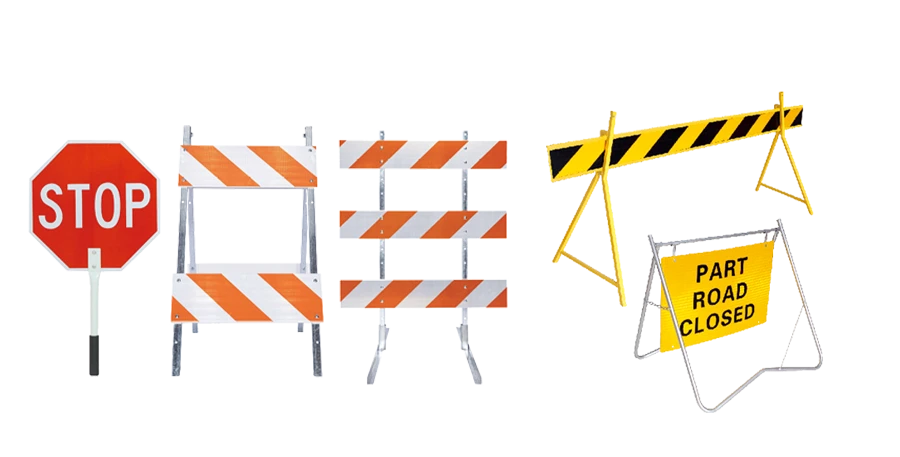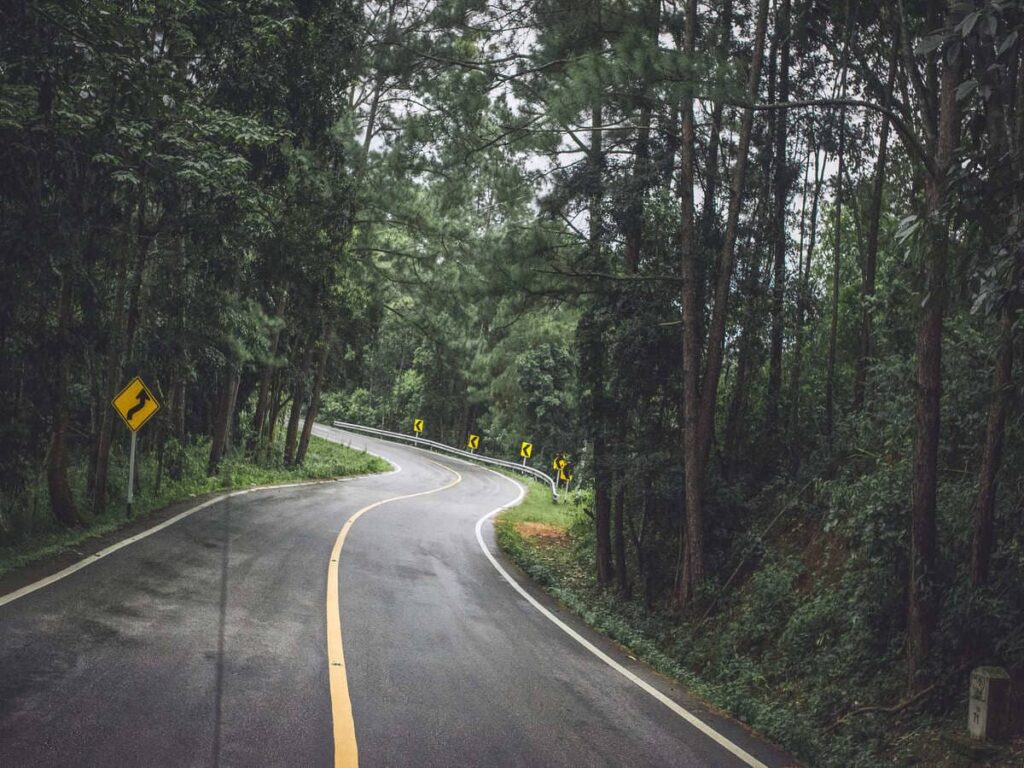
When navigating winding roads and hairpin turns, having the right sharp curve sign is crucial for driver safety. Sharp curves are particularly hazardous, with horizontal curves being about three times more likely to cause crashes than straight roads. Infatti, one-fourth of all fatal crashes occur on winding roads.
Per proteggere i conducenti, a Hairpin Curve sign is ideal for turns over 135 gradi, while Chevron Alignment signs improve visibility and help prevent accidents by clearly marking sharp turns. Ensure your signs are highly visible, placed in the right location, and made with high retroreflectivity for maximum safety.
OPTRAFFICO offers a wide range of high-quality sharp curve and chevron alignment signs, designed to meet safety standards and withstand harsh conditions. Our reflective traffic signs for sale are engineered for maximum visibility, ensuring that drivers can react in time to navigate winding roads and hairpin turns safely. Visit OPTRAFFIC today to find the right traffic signs for your project and ensure the safety of drivers and pedestrians alike.
Takeaway chiave
- Sharp curve signs warn drivers about dangerous turns. They help stop accidents by letting drivers slow down early.
- Use high retroreflectivity materials for signs. This makes signs easy to see at night and in bad weather. It helps keep winding roads safe.
- Put sharp curve signs at least 100 feet before the curve. This gives drivers enough time to slow down and get ready.
- Pick the right size for your signs. Bigger signs are easier to see. They help drivers spot sharp curves faster.
- Controlla e prenditi cura dei segni spesso. Clean them and change any that are faded or broken. This keeps drivers safe.
Why Sharp Curve Signs Matter for Road Safety
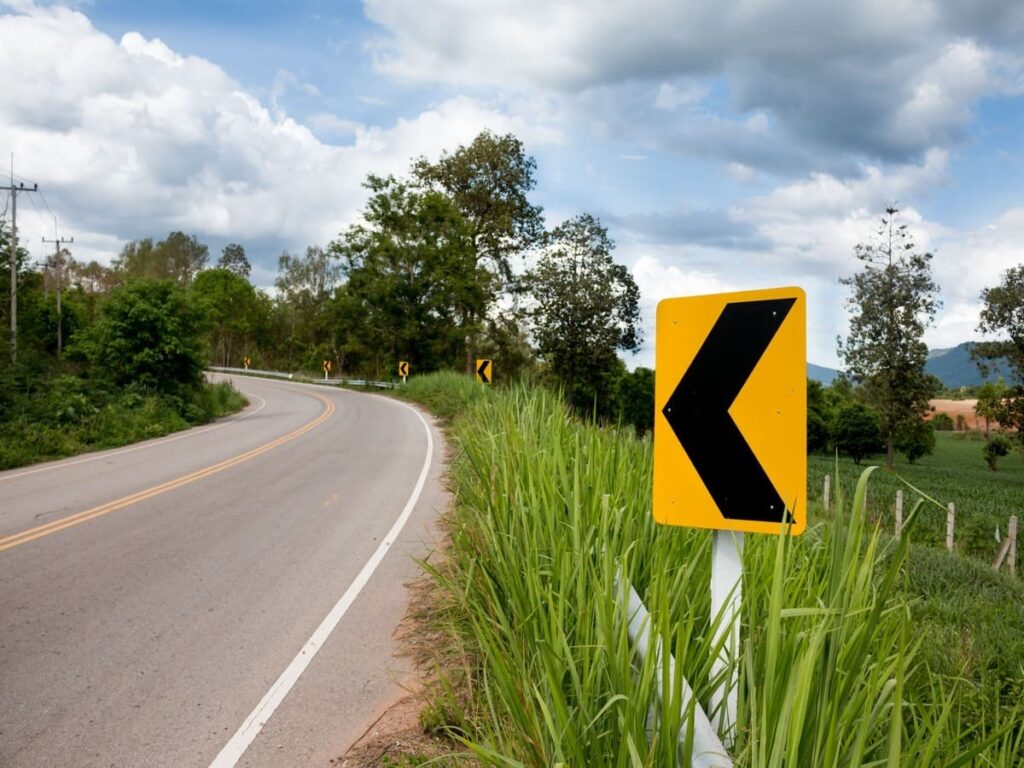
Accident Risks on Sharp Curves and Winding Roads
Sharp curves are significantly more hazardous compared to straight roads. Secondo il Amministrazione federale delle autostrade (FHWA), 58% of fatal crashes involve lane departures, with curves having three times the crash rate of straight road sections. Winding roads E hairpin turns represent critical zones where drivers face heightened risks. Speeding, traffico intenso, E scarsa visibilità are common contributing factors to accidents on these roads.
Here are some common dangers you might face on these roads:
- Speeding: Much riskier on sharp turns.
- Heavy traffic: Leads to tailgating and sudden stops.
- Narrow roads: Make passing or lane changes difficult.
- Poor lighting: Reduces visibility of upcoming turns.
- Obstacles: Alberi, poli, or other road hazards increase risk.
- Missing signs: Make drivers unaware of sharp curves.
La ricerca mostra questo one-fourth of all fatal crashes occur at curves, and these crashes are most frequent at night or in bad weather, emphasizing the need for clear and visible curve warning signs.
How Sharp Curve Signs Play a Key Role in Road Safety
Sharp curve signs are crucial for preventing accidents. They give drivers the opportunity to slow down and adjust their speed before approaching a curve. Studies show that the use of chevron signs and sharp curve signs reduces nighttime crashes by up to 25%. These signs are particularly effective for hairpin turns and winding roads.
| Studio | What They Found | Come ti aiuta |
|---|---|---|
| Agent and Creasy (1986) | Chevrons reduced accidents | You get better guidance on sharp turns |
| Katz et al. (2006) | Markings before curves lower speed | You slow down before dangerous turns |
| Montella et al. (2015) | Warning signs improve early detection | You spot sharp turns sooner |
Sharp curve signs give drivers advanced notice, helping them make safer driving decisions.
Types of Sharp Curve and Turn Signs for Safe Driving
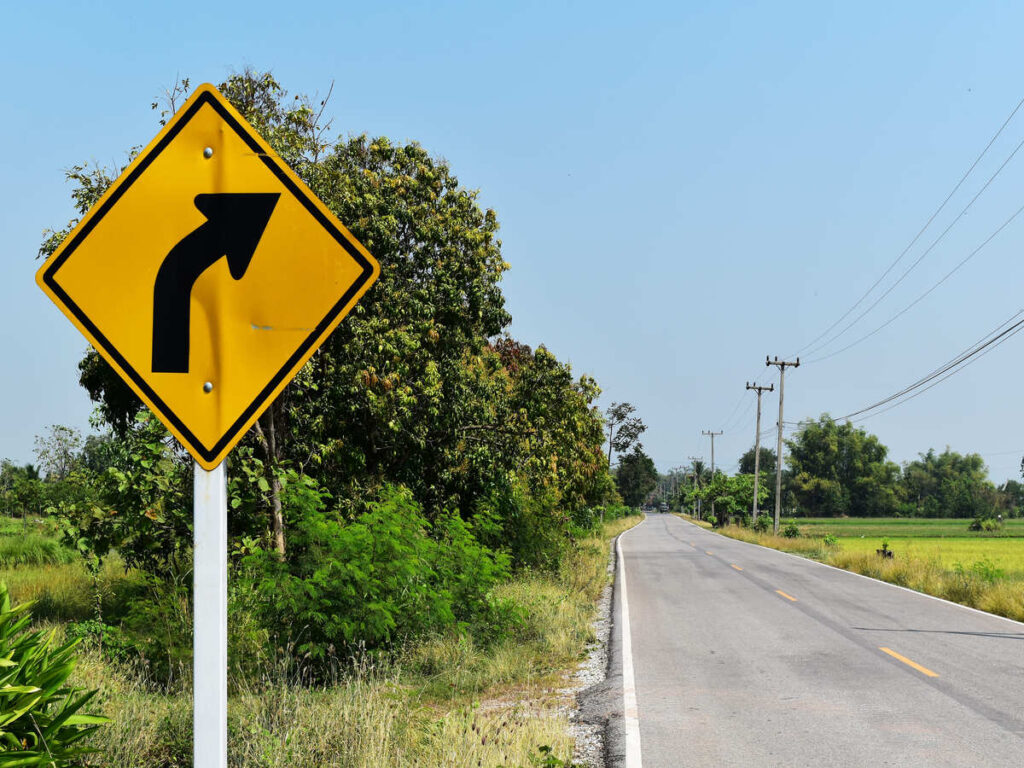
Curve and Turn Signs Overview
There are several types of curve signs that warn drivers of upcoming hazards. These signs help prepare drivers for sharp turns and winding roads. Here’s a quick look at the main types:
| Categoria | Descrizione |
|---|---|
| Curve | Warns you about a sharp curve ahead. |
| Reverse Curve | Tells you there’s a reverse curve coming up. |
| Winding Road | Alerts you to a series of curves ahead. |
| Hairpin Turn | Shows you a very sharp turn is just ahead. |
| Chevron Alignment | Guides you through tight bends with panels. |
| Advisory Speed | Suggests a safe speed for the curve (Piace 30 mph). |
| Sharp Curve | Warns you about a sharp curve ahead. |
You might also see traffic safety signs for deer crossings or slippery roads, but curve and turn signs are the ones that keep you alert for sudden changes in direction. These signs use bright colors and clear symbols, so you can spot them quickly, anche di notte.
Chevron and Hairpin Turn Signs
Chevron signs stand out on winding roads and hairpin turns. You’ll notice them as bold panels with black arrows on a yellow background. They point you in the right direction as you drive through a curve. You often see several chevron signs lined up along a tight bend. This helps you follow the road’s path and avoid drifting out of your lane.
Hairpin turn signs warn you about extremely sharp curves, usually greater than 135 gradi. When you see a hairpin turn sign, you know you need to slow down and prepare for a big change in direction. These signs are crucial for mountain roads and rural highways, where hairpin turns can catch you off guard.
Mancia: Chevron alignment panels work best when placed along the entire curve. They guide you visually and help you judge the sharpness of the turn.
Winding Road and Dynamic Curve Warning Signs
Winding road signs tell you that a series of curves is coming up. You’ll see a squiggly arrow on a yellow sign. This alerts you to adjust your speed and stay focused, since you’ll be navigating multiple curves in a row. These signs are common on scenic routes and mountain passes.
Dynamic curve warning signs use technology to improve road safety. Some signs light up or flash when sensors detect a vehicle approaching too fast. Others display real-time advisory speeds based on weather or road conditions. These advanced signs meet Standard MUTCD and come in different sizes to fit any road. They help you react faster and make safer choices on winding roads.
- Warning signs give you advance notice of upcoming curves.
- Consistent signage improves your awareness and reaction time.
- Properly placed signs prepare you for the road ahead and help prevent crashes.
Selecting the Best Sharp Curve Sign
Visibility and Retroreflectivity
Drivers need to see sharp curve signs fast. This is important at night and in bad weather. Retroreflectivity helps signs shine when headlights hit them. Brighter signs are easier to see on winding roads. Not all reflective materials work the same way. Ecco i tipi principali:
| Grado | Descrizione dell'applicazione |
|---|---|
| Grado di ingegneria (PER ESEMPIO) | Good for low-speed, low-light areas, come i parcheggi. |
| Prismatico ad alta intensità (ANCA) | Brighter and tougher, used for warning and regulatory signs on roads. |
| Grado di diamanti | The brightest and most durable, perfect for critical signs on highways and sharp curves. |
Diamond Grade reflective sheeting is the best choice. It meets MUTCD standards. It keeps your sign bright in any weather.
Mancia: Put your reflective road sign where headlights shine on it. This makes it easier to see on winding roads and hairpin turns.
Sign Size and Proper Placement
Dimensione del segno e il posizionamento è molto importante. Small signs can blend in and be missed. Big signs stand out and get noticed. Follow these rules:
- Put your sign at least 100 feet before the curve.
- Keep alignment warning signs at least 100 feet apart from other signs.
This gives drivers time to slow down and react. On winding roads, this is extra helpful. Using chevron signs with sharp curve signs gives more help to drivers.
Material Durability for Long-Lasting Performance
Signs need to last through rain, nevicare, and hot sun. Good sign materials help traffic safety signs stay strong. Here is how common materials work:
| Materiale | Prestazioni in condizioni meteorologiche estreme |
|---|---|
| Alluminio | Dura per anni, resists fading and rough weather. |
| 3M ProShield Laminate | Shields against UV rays, sale, e graffi. |
| Fogli riflettenti di grade diamanti | Stays bright and visible, anche in condizioni difficili. |
Aluminum signs with Diamond Grade sheeting last the longest. They keep their color and brightness. Drivers can always see them. Se vuoi un cartello che dura, this is the best choice.
OPTRAFFICO provides premium aluminum traffic signs for sale designed with Diamond Grade reflective sheeting, ensuring maximum visibility and durability. Se hai bisogno traffic signs for construction zones, Segni di sicurezza stradale, O segnali stradali personalizzati, our products are built to withstand harsh conditions and ensure long-term performance. Shop OPTRAFFIC’s range of high-quality signs today to find the perfect solution for your project and keep drivers and pedestrians safe on the road.
Optimal Placement for Sharp Turns
Strategic Positioning for Maximum Effectiveness
You want your sharp curve sign to work every time a driver approaches a winding road or hairpin turn. The right spot makes all the difference for road safety. If you place the sign too close to the curve, drivers might not have enough time to react. Too far away, and they might forget the warning.
Here’s what works best:
- Place sharp curve ahead signs at a distance that gives drivers time to slow down.
- Make sure the arrow direction matches the actual curve on the road.
- Use larger signs or multiple signs on multi-lane roads for better visibility.
- Avoid placing signs right next to the curve. Drivers need space to process the warning and adjust their speed.
Mancia: Position your sharp curve sign so it stands out, especially on winding roads with lots of distractions.
Sign Height and Angle for Clear Visibility
You want every driver to see your sign, no matter the vehicle size. The height and angle matter. Set the sign at a height that’s easy for both car and truck drivers to spot. Most experts recommend mounting signs about five feet above the ground. This keeps them above grass, nevicare, o veicoli parcheggiati.
Angle the sign so it faces oncoming traffic. If you tilt it just right, headlights will hit the sign and make it pop at night. On hairpin turns, angle the sign toward the curve’s entry point for maximum effect.
| Placement Factor | Perché è importante |
|---|---|
| Altezza | Keeps sign visible above obstacles |
| Angolo | Directs reflection to drivers |
Enhancing Nighttime Visibility with Retroreflective Materials
Night driving on winding roads can be tough. You need your sharp curve sign to shine bright when headlights hit it. Retroreflective materials bounce light back to drivers, making signs easy to spot from far away.
- Prismatico ad alta intensità (ANCA) sheeting is three times brighter than basic engineer-grade materials.
- HIP sheeting resists weather, Raggi UV, e sbiadimento, so your sign stays visible for years.
- Reflective signs can cut nighttime accidents by up to 50%. They work best in areas with poor lighting or bad weather.
When you use retroreflective materials, you boost road safety for every driver. Your sharp curve sign becomes a beacon, guiding drivers safely through hairpin turns and winding roads—even after dark.
Compliance and Common Mistakes in Sharp Curve Signage
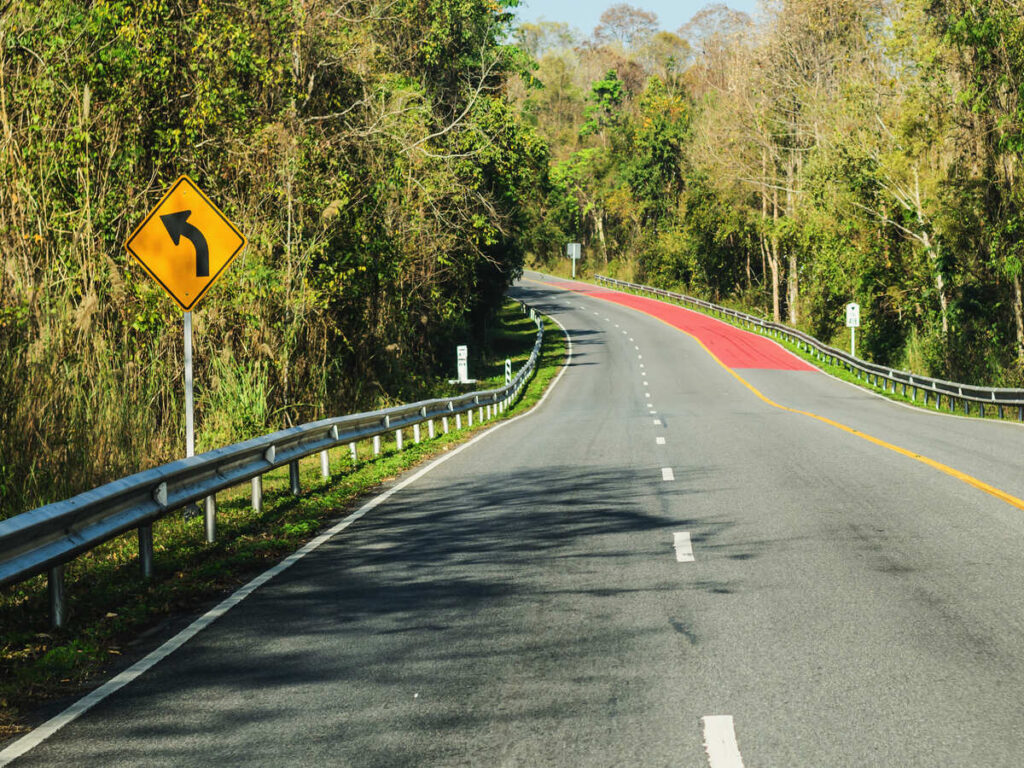
MUTCD and Local Standards Compliance
Every sharp curve sign should follow the right rules. The MUTCD gives the main rules for how signs look and where they go. These rules also say how bright signs must be. If you use these rules, you help keep drivers safe. You also avoid getting into legal trouble. States and towns have their own rules too. They must follow these for putting up and taking care of signs.
Se non rispetti le regole, bad things can happen:
| Responsabilità | Implication |
|---|---|
| Agenzie statali | Must follow MUTCD rules or they could lose federal money |
| Governi locali | Must meet state rules for putting up and caring for signs |
| Failure to comply | More risk of lawsuits and losing federal money for both state and local governments |
If you skip the rules, you could lose money and get blamed for accidents. Following the rules keeps your town safe and helps everyone on the road.
Common Sizing and Maintenance Errors
Sharp curve signs need to be the right size and checked often. Small signs are hard to see, Soprattutto su strade trafficate. Big signs are easy to spot and help drivers slow down. You should look at signs often to see if they are faded, rotto, o bloccato.
Mancia: Change old or broken signs fast. Clean road signs help drivers see sharp curves and stay safe.
Some groups forget to fix old signs or use the wrong size. This can make drivers confused or miss warnings. You want every sign to stand out and be easy to see, giorno o notte.
Poor Placement and Its Consequences
Improper placement of sharp curve signs can significantly compromise road safety. If a sign is placed too close to the curve, drivers may not have enough time to slow down, aumentando il rischio di incidenti. Signs that are blocked by trees, fogliame, or positioned incorrectly, such as being turned away from the road, become ineffective in alerting drivers to the upcoming hazard. Infatti, studies have shown that pavement markings can sometimes be more effective than signs mounted on posts, especially in areas where visibility is compromised. Tuttavia, for very sharp curves or hairpin turns, chevron signs—which provide additional directional guidance—have been shown to improve safety outcomes significantly.
Here are some common placement mistakes and their consequences:
- Signs placed too early or too late confuse drivers, who may either start slowing down too early and disrupt traffic flow, or too late, causing sudden, unsafe deceleration.
- Blocked signs due to vegetation or road obstructions do not serve their purpose, and drivers may be unaware of the curve until it’s too late.
- When signs are hard to see or missing, drivers often make poor decisions, either speeding up or taking the curve too fast. Questo può portare a lane departures, where vehicles run off the road or overturn—one of the most common types of crashes on curves.
Choosing the right sharp curve sign keeps winding roads and hairpin turns safer. You should pick signs with high retroreflectivity, la dimensione giusta, e materiali forti. Always follow MUTCD rules. Experts suggest you:
- Use ergonomic designs for better understanding.
- Test signs with different drivers before installing.
- Make sure everyone can recognize the sign quickly.
If you’re unsure whether your current signs are up to standard, or if you need expert advice, OPTRAFFICO is here to help. Nostro high-quality sharp curve signs meet Standard MUTCD and are designed for long-term use, offerta maximum retroreflectivity to keep roads safer.
Domande frequenti
What does a sharp curve sign mean?
UN sharp curve sign indicates that the road ahead has a sharp turn, alerting drivers to slow down and adjust their driving to safely navigate the curve. This sign is commonly used in areas where the road suddenly bends, such as on winding roads, hairpin turns, O zone di costruzione.
What sign means the road is curving sharply to the left?
IL left sharp curve sign is used to warn drivers that the road will curve sharply to the left. This sign is essential for road safety, especially on winding or mountainous roads. OpTraffic offre di alta qualità, reflective road signs that ensure maximum visibility for drivers, anche in condizioni di scarsa illuminazione.
Quali sono i 4 types of curves on roads?
The four common types of curves on roads are:
- Horizontal curves
- Curve affilate
- Hairpin turns
- S-shaped curves
Each of these curves requires specific traffic signs to guide drivers safely. OPTRAFFICO provides a wide range of traffic signs for curves, including reflective signs for both sharp and gradual curves, ensuring safety across all road types.
What makes a sharp curve sign different from other road signs?
Sharp curve signs warn you about sudden changes in direction. You see them on winding roads and hairpin turns. These signs use bold arrows and bright colors to grab your attention and boost road safety.
How far before a curve should you place a sharp curve sign?
You should place a sharp curve sign at least 100 A 300 piedi before the curve. This gives you enough time to slow down and prepare for the turn, especially on winding roads.
Can chevron signs improve safety on hairpin turns?
SÌ! Chevron signs guide you through sharp curves. You see the arrows and know which way to steer. These signs help you stay in your lane and avoid accidents on dangerous hairpin turns.
How to select the best sharp curve sign for winding roads and hairpin turns?
Selecting the best sharp curve sign depends on the severity of the curve. For winding roads and hairpin turns, you should choose signs with high retroreflectivity and the correct size to ensure visibility at all times. OPTRAFFICO offerte reflective sharp curve signs for sale that meet safety standards and provide maximum visibility, especially in low light and high-traffic areas.

